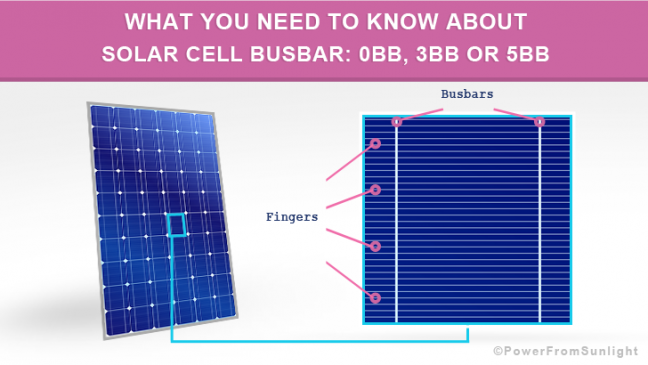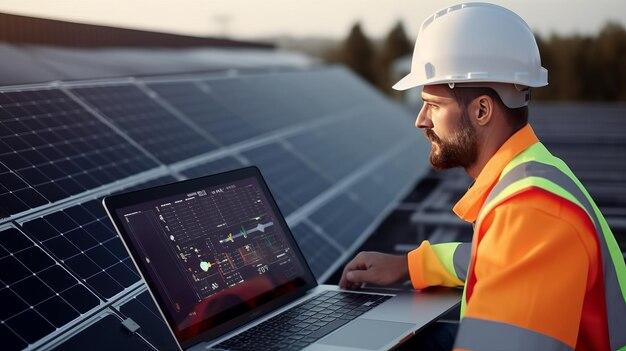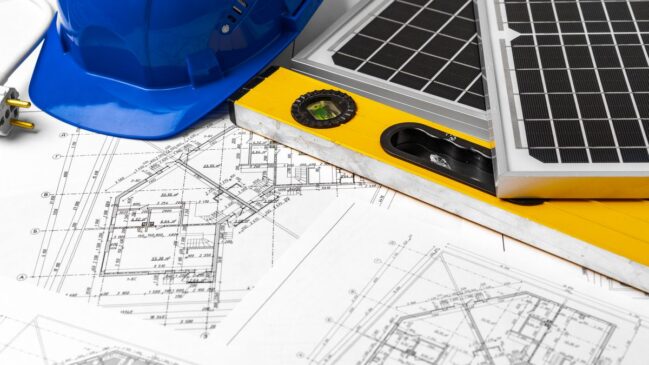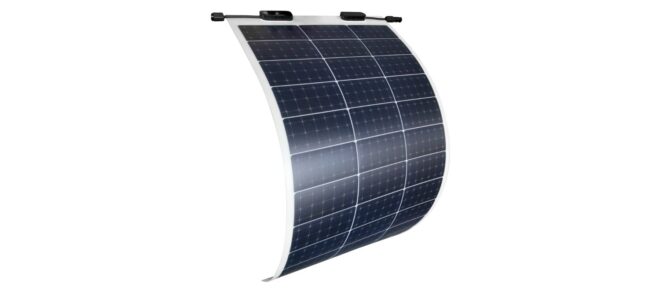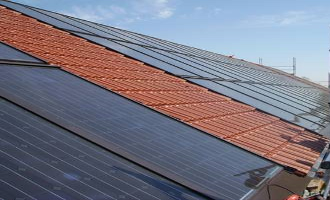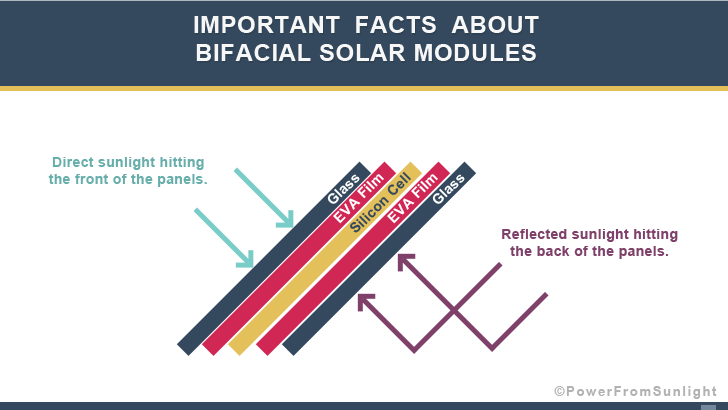
Important Facts About Bifacial Solar Modules
The rays from the sun always come from different directions. It would be great if PV solar panels could also absorb these rays and turn them into energy. This is possible with bifacial solar modules.
What is a bifacial solar cell? How does it work? What advantages do bifacial solar modules have? This article answers these questions.
What is a bifacial solar cell?
The bifacial solar cell is a double-sided cell, which allows the use of incident sunlight from the front side as well as from the rear.
Bifacial solar cells are usually fabricated with monocrystalline solar cell technology.

(Source: http://www.rct-solutions.de)
A second glass pane on the rear side of the module ensures that indirect light reflecting from the sun rays are captured from the rear of the solar cells. Thus, the module achieves a higher efficiency.
Bifacial solar cell manufacturing
Bifacial solar cells are more expensive in the production because additional manufacturing steps for the solar cell production are necessary: The Bifacial solar cells must be polished and passivated on the rear side as well as subsequently reopened to facilitate contact.
These production steps can also be made on existing solar PV system by retrofitting.
Advantages of bifacial solar modules
Bifacial solar modules offer some unique benefits:
Higher solar panel efficiency
The Bifacial solar modules ensure that indirect light of reflected sun rays is captured from the rear of solar cells and therefore, they achieve a higher efficiency.
In addition to the pure yield increase, the bifacial solar cells need a relatively small area to increase the output of the solar module.
Extended durability of bifacial solar modules
By embedding of solar photovoltaic cells in a glass composite, they are highly protected against environmental and mechanical influences and therefore last longer.

(Source: Sanyo Energy Corporation)
Ideal for solar panel systems, in which light is reflected from the ground
Bifacial solar modules are ideal for flat roofs and ground-mounted solar panel systems, where light is reflected from the ground.
The volume of light being absorbed from the rear side depends on the ground.
With white ground and an optimal elevation of the bifacial solar modules, additional yields of up to 25 percent are possible.
Bifacial solar modules offer more flexibility in solar PV system designs
With the use of bifacial solar modules, the direction that the modules are facing is of less importance. Therefore, there are fewer restrictions in module applications and design.
Vertical installation
By installing PV solar panels vertically, heavy snow loads or sand will not inhibit the modules from generating electricity.

(Source: Sanyo Energy Corporation)
Besides, bifacial solar panels are PID-free.
Frameless bifacial solar modules do not need to be grounded, which saves time as well as material during installation.
Most dual glass modules are offered with an extended performance warranty of 30 years, in contrast to the 25-year warranty provided for conventional PV solar panels.
Disadvantages of bifacial solar panels
Bifacial solar modules are more expensive and are made of double glass, which makes the module a lot heavier.
Cost/benefit ratio
Whether the additional costs can be compensated by the higher electricity yields, depends on, whether the solar photovoltaic cell on the rear side is as equally refined as the front side.
Moreover, it is essential that the correct material is used to make the rear side of the bifacial solar module.
For this, many manufacturers rely on glass.
Some use a white film, which seals the module from behind. The light is then collected in the intercellular spaces, is reflected on the white backing film and thus arrives at the underside of the bifacial solar cells. So, a part of the light is regained.
In addition to the production technique and – like in the standard cells – the angle of inclination, the color or rather the reflection ability of the ground influences the radiation intensity on the backside of the bifacial solar cell.


